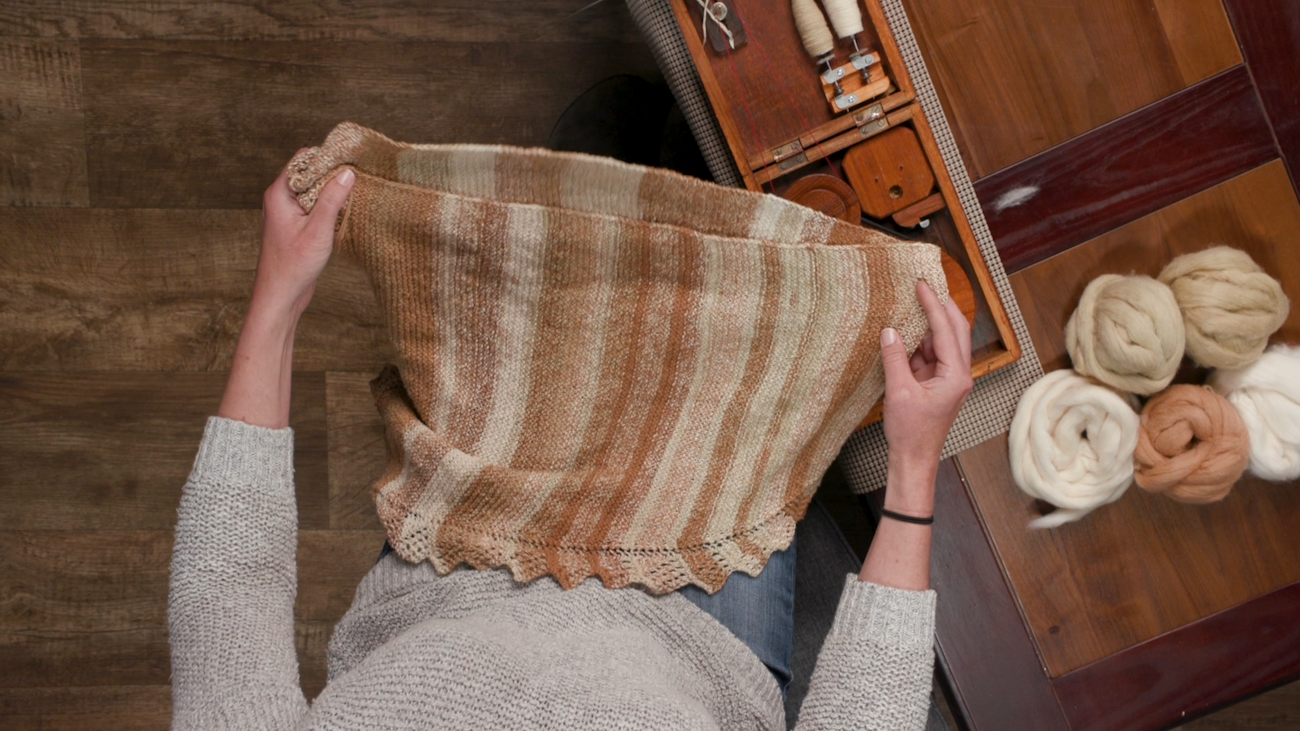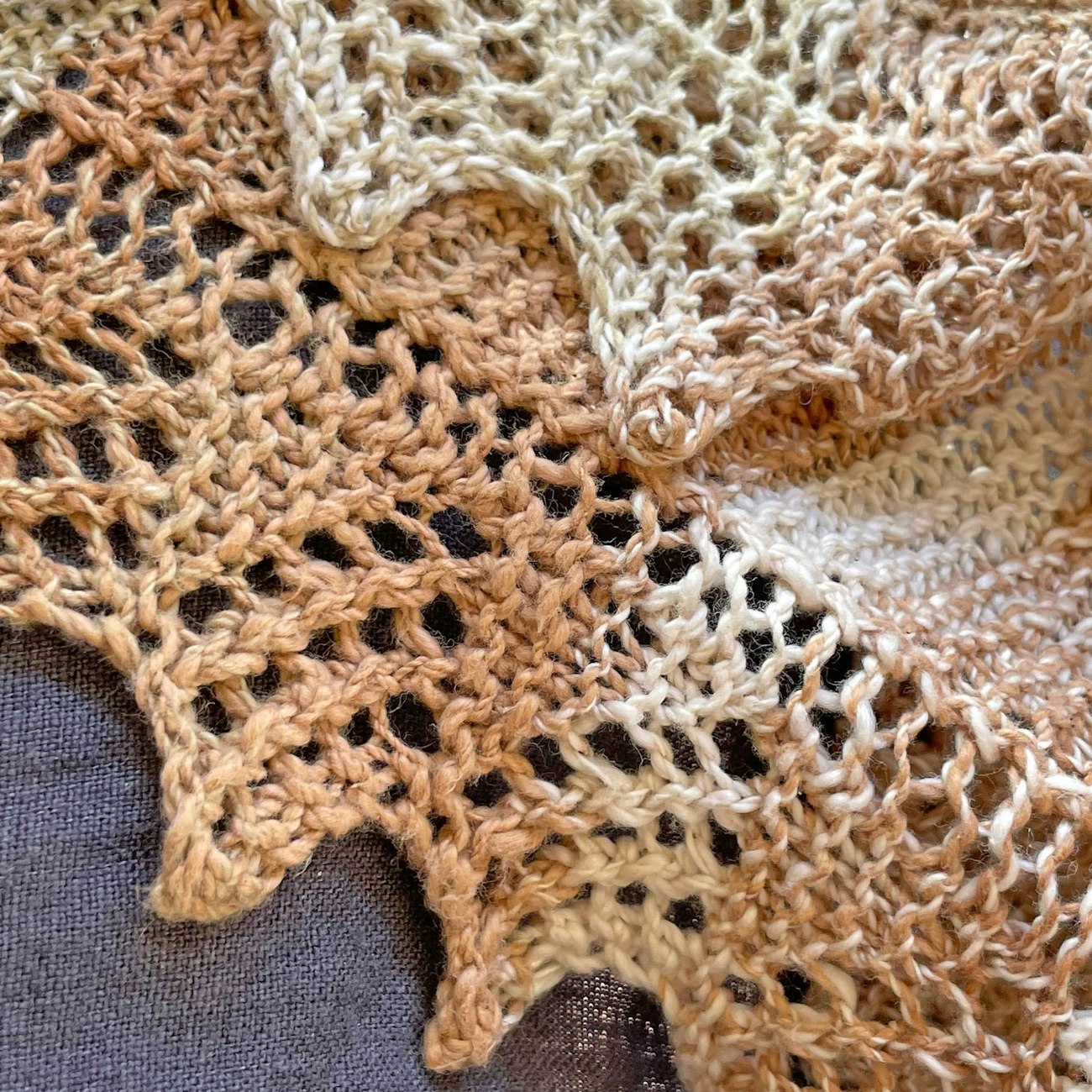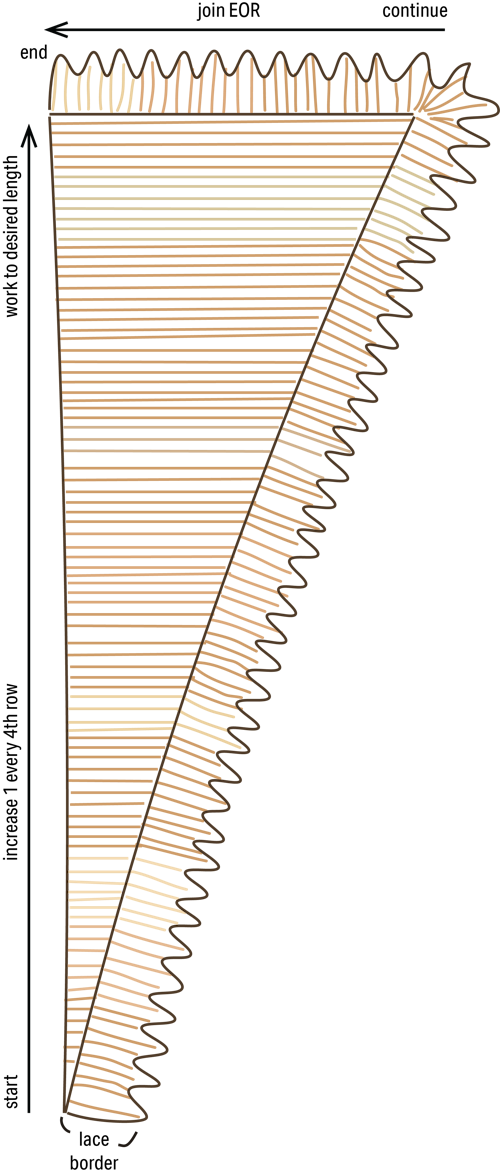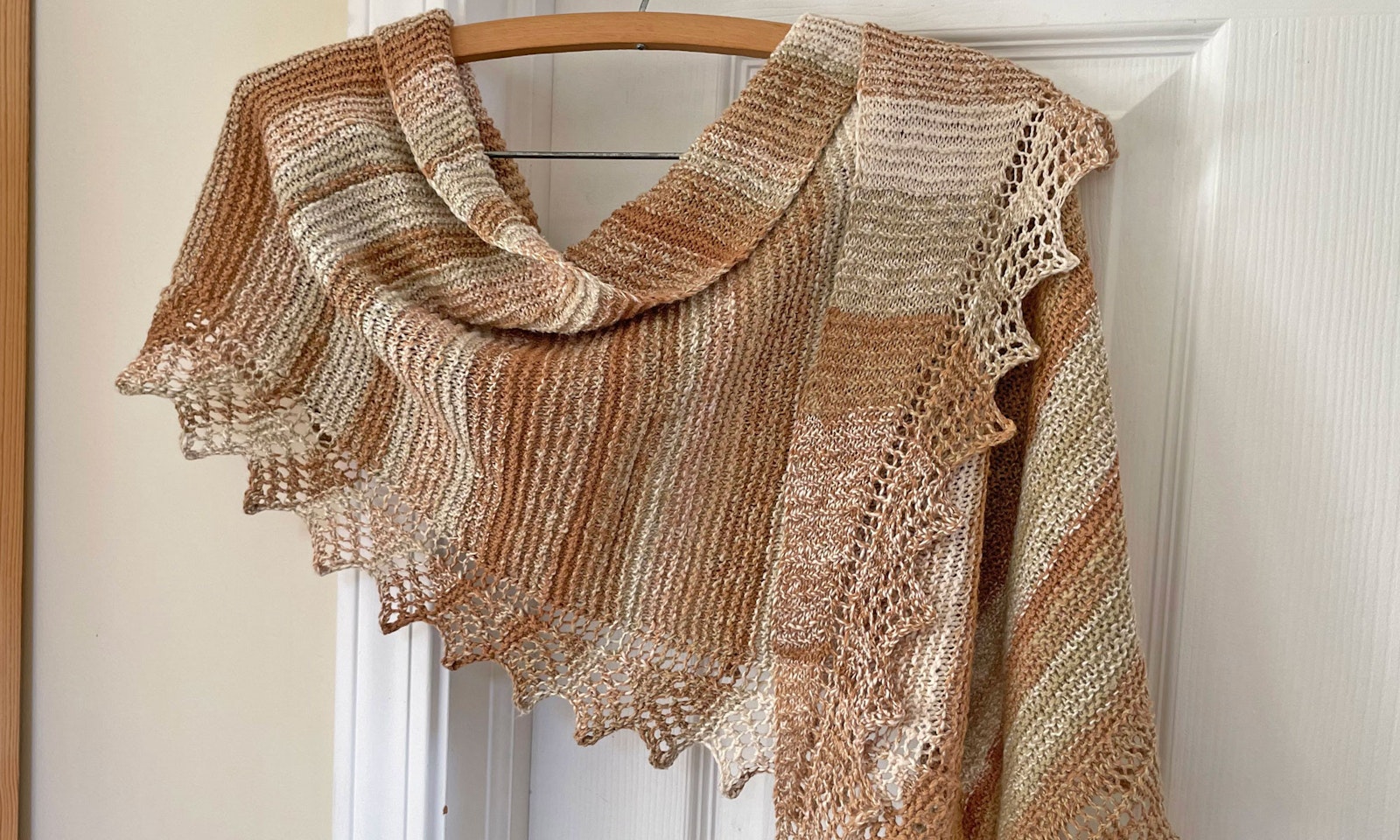Subscriber Exclusive
Kate’s Simple and Beautiful Cotton Shawl Pattern
Put your handspun to work, even if it’s imperfect! Kate designed this simple shawl to highlight handspun color and texture for beginning charkha spinners, but you can use this recipe for other fibers, too.
Put your handspun to work, even if it’s imperfect! Kate designed this simple shawl to highlight handspun color and texture for beginning charkha spinners, but you can use this recipe for other fibers, too. <a href="https://spinoffmagazine.com/kate-s-simple-and-beautiful-shawl-pattern/">Continue reading.</a>
https://spinoffmagazine.com/cdn-cgi/image/format=auto/https://www.datocms-assets.com/75073/1665618293-kates-simple-cotton-shawl-cover.jpg?auto=format&w=900
I love knitting with my handspun for so many reasons. Using our own yarns gives us all those warm and fuzzy feelings, but the process of using our yarns also gives us vital information about what does and does not work well, and how we will adjust as we move forward.
Many spinners find that learning to spin cotton on a book or box charkha takes a lot of practice. Sage advice that Stephenie Gaustad passes along in her book on cotton puts it best: “Bette Hochberg once told me that the best teacher for spinning cotton was a pound of it.” My goal with this simple shawl recipe is to see how that pound of imperfect practice yarns can be put to good use!
Spinning Notes
When I teach beginners how to spin cotton, I like to provide a wide range of colors and preparations. The natural color cotton we can currently purchase in slivers varies quite a bit in character: green is often silky and short, brown is often a bit crimpy and short, tan and white are often longer staple, and so on. Each of these will feel different in our hands as we get comfortable managing twist and drafting. Trying different colors until you find the one that works best for you at that time can smooth your spinning path. And bouncing between colors leaves you with a multicolor bobbin, which I find so striking!
I spun the yarn for this specific shawl while I was rehabilitating some timeworn charkhas. Because they were not in tip-top shape and I was focused on the tools and not the yards of singles, the yarn I was producing was uneven. There are slubs and thin spots and the gauge varies. However, once plied into a 2-ply yarn, this handspun shines when worked in the simple texture of garter stitch.
 Kate’s shawl, as seen in her course How to Spin on a Charkha
Kate’s shawl, as seen in her course How to Spin on a Charkha
Pattern Recipe and PDF Download
Kate used a simple construction to knit an asymmetrical triangular garter-and-lace shawl.
For her shawl, Kate used the traditional Shetland edging pattern called Brand Iron (from The Magic of Lace Knitting by Elizabeth Lovick), but any garter-stitch lace edging will do. Try Hilton Lace or another favorite pattern.
SUBSCRIBER EXCLUSIVE
I love knitting with my handspun for so many reasons. Using our own yarns gives us all those warm and fuzzy feelings, but the process of using our yarns also gives us vital information about what does and does not work well, and how we will adjust as we move forward.
Many spinners find that learning to spin cotton on a book or box charkha takes a lot of practice. Sage advice that Stephenie Gaustad passes along in her book on cotton puts it best: “Bette Hochberg once told me that the best teacher for spinning cotton was a pound of it.” My goal with this simple shawl recipe is to see how that pound of imperfect practice yarns can be put to good use!
Spinning Notes
When I teach beginners how to spin cotton, I like to provide a wide range of colors and preparations. The natural color cotton we can currently purchase in slivers varies quite a bit in character: green is often silky and short, brown is often a bit crimpy and short, tan and white are often longer staple, and so on. Each of these will feel different in our hands as we get comfortable managing twist and drafting. Trying different colors until you find the one that works best for you at that time can smooth your spinning path. And bouncing between colors leaves you with a multicolor bobbin, which I find so striking!
I spun the yarn for this specific shawl while I was rehabilitating some timeworn charkhas. Because they were not in tip-top shape and I was focused on the tools and not the yards of singles, the yarn I was producing was uneven. There are slubs and thin spots and the gauge varies. However, once plied into a 2-ply yarn, this handspun shines when worked in the simple texture of garter stitch.
 Kate’s shawl, as seen in her course How to Spin on a Charkha
Kate’s shawl, as seen in her course How to Spin on a Charkha
Pattern Recipe and PDF Download
Kate used a simple construction to knit an asymmetrical triangular garter-and-lace shawl.
For her shawl, Kate used the traditional Shetland edging pattern called Brand Iron (from The Magic of Lace Knitting by Elizabeth Lovick), but any garter-stitch lace edging will do. Try Hilton Lace or another favorite pattern.[PAYWALL]
 A close-up look at the traditional Shetland edging pattern that Kate used on her shawl.
A close-up look at the traditional Shetland edging pattern that Kate used on her shawl.
Instructions
Follow these instructions to knit Kate’s shawl or download the PDF for a printable version.
Cast on enough stitches to work your preferred lace edging plus 1 more stitch. It may help to place a marker between the extra stitch and the lace stitches. On every row, work the lace chart and knit the extra stitch or stitches.
When beginning a row with plain knitted stitches, slip the first stitch purlwise for a tidy edge. Every fourth row, increase 1 stitch between the garter and lace sections; on following rows, knit the increased stitch.
Continue to the desired length, ending after finishing the lace stitches.
On the next row, work the lace portion to the last lace stitch and join it with the first knit stitch from the shawl body, turn, sl st, work WS of lace portion, turn. Continue joining every other lace row until all body stitches have been used. Bind off.
These directions give a basic shawl construction; for a more complete pattern, Kate recommends the Chameleon Shawl by Melvenea Hodges, originally published in Spin Off Summer 2021.

This diagram shows the basic structure and construction of Kate’s shawl.
Kate Larson is the editor of Spin Off and spends as many hours as life allows in the barn with her beloved flock of Border Leicesters.
 Kate’s shawl, as seen in her course How to Spin on a Charkha
Kate’s shawl, as seen in her course How to Spin on a Charkha

 A close-up look at the traditional Shetland edging pattern that Kate used on her shawl.
A close-up look at the traditional Shetland edging pattern that Kate used on her shawl. 